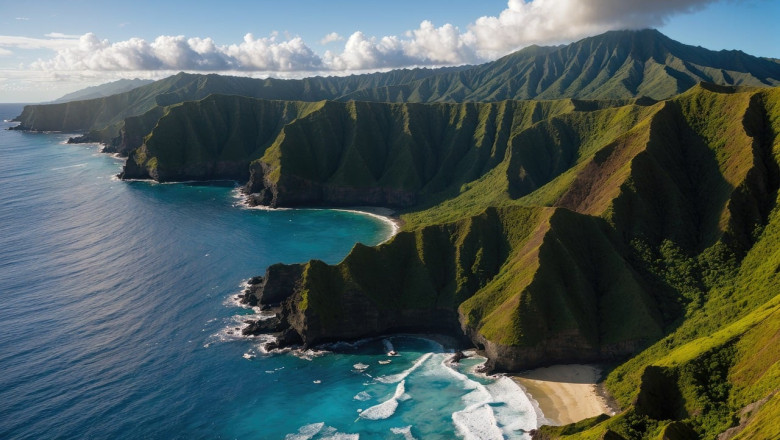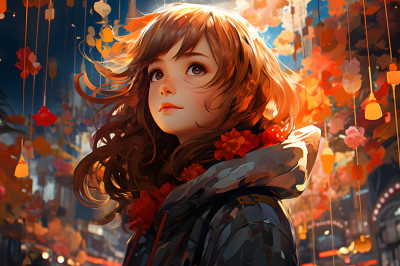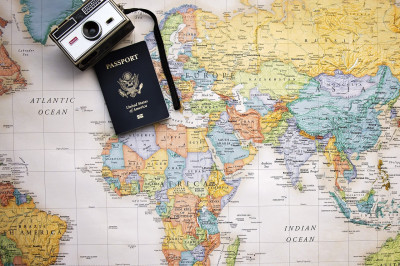Honolulu: Hawaii's Cultural and Economic Hub
Honolulu, the capital city of Hawaii, is not only the gateway to the island chain but also the epicenter of Hawaiian culture, history, and economy. Nestled on the southeast coast of the island of Oahu, it is a city where East meets West, and modernity meets tradition.
The Cultural Heart of Hawaii
Honolulu is a melting pot of ethnicities and cultures, with influences from Native Hawaiian, Asian, European, and American heritages. This unique blend is evident in the city's art, music, festivals, and cuisine. The Honolulu Museum of Art and the Bishop Museum offer windows into the rich tapestry of the island's history and artistic expressions. The annual King Kamehameha Celebration, Lei Day, and the Honolulu Festival showcase the city's vibrant traditions and multicultural community.
Economic Engine of the Aloha State
As the state's economic powerhouse, Honolulu is home to Hawaii's major financial institutions, businesses, and tourism industry. Waikiki, the world-renowned neighborhood, is the center of tourism with its iconic beaches, high-end shopping, and entertainment. The city's harbor, one of the busiest in the United States, is a hub for international trade and commerce, further solidifying Honolulu's role as a critical economic player in the Pacific.
Modern Urban Living Amidst Natural Beauty
Honolulu offers a unique urban experience with its skyscrapers and bustling city life surrounded by the natural beauty of the Pacific Ocean and the dramatic backdrop of the Ko'olau Mountains. Residents and visitors alike enjoy a high quality of life with access to state-of-the-art healthcare, education, and transportation systems. The city's infrastructure supports a lifestyle that is both cosmopolitan and closely connected to nature.
A Center for Education and Innovation
The city is also an educational and research hub, with the University of Hawaii at Manoa leading in areas such as astronomy, oceanography, and Pacific Rim studies. This academic environment fosters innovation and has given rise to various research institutions and think tanks that contribute to global conversations on climate change, sustainability, and cultural studies.
A Destination for Global Events
Honolulu's strategic location in the Pacific makes it an ideal venue for international conferences and events. The Hawaii Convention Center, with its state-of-the-art facilities, attracts a diverse array of gatherings, from scientific symposiums to economic summits, further enhancing the city's global presence and influence.
Through its rich cultural heritage, robust economy, and stunning natural environment, Honolulu continues to be a city that not only represents Hawaii but also stands as a microcosm of the broader Pacific region's past, present, and future.
The Rich History of Honolulu: From Royalty to Modern DayAncient Beginnings and the Rise of Hawaiian Royalty
Honolulu's history is deeply rooted in the ancient traditions and culture of the Native Hawaiian people. Prior to European contact, the area that is now Honolulu was home to a thriving Native Hawaiian community with complex social structures and a rich cultural heritage. The fertile lands of the Oahu island were ruled by various ali'i (chiefs), who oversaw the land and its people.
The Arrival of Captain Cook and Western Influence
In 1778, Captain James Cook arrived in the Hawaiian Islands, marking the beginning of significant change. Although Cook did not land in Honolulu, his arrival signaled the onset of increased Western influence. By the early 19th century, Western traders, whalers, and missionaries began to frequent Honolulu, bringing with them new technologies, diseases, and a different way of life that would forever alter the Hawaiian landscape.
Kamehameha the Great and the Unification of the Hawaiian Islands
The most notable figure in Hawaiian history is King Kamehameha the Great, who is celebrated for uniting the Hawaiian Islands under one rule in the early 19th century. Kamehameha established his court in Honolulu, which he recognized for its strategic location and protected harbor, making it the center of political and economic activity. This period solidified Honolulu's status as the capital of the Hawaiian Kingdom.
The Overthrow of the Hawaiian Monarchy
In the late 19th century, the Hawaiian monarchy faced increasing pressure from foreign businessmen and interests, leading to the controversial overthrow of Queen Lili'uokalani in This pivotal event marked the end of the Hawaiian Kingdom and led to the establishment of the Provisional Government of Hawaii, which was later annexed by the United States in 1898.
Honolulu in the 20th Century: Military Presence and Statehood
Throughout the 20th century, Honolulu's strategic position in the Pacific Ocean made it a key military outpost for the United States. The attack on Pearl Harbor on December 7, 1941, thrust Honolulu onto the world stage and played a significant role in the United States' entry into World War II. Post-war, Honolulu experienced rapid growth and modernization, culminating in Hawaii's admission to the Union as the 50th state in 1959.
Contemporary Honolulu: A Melting Pot of Cultures
Today, Honolulu is a vibrant city that reflects a blend of Native Hawaiian culture with influences from Asia, Europe, and the Americas. As the state capital and largest city in Hawaii, it is a hub for government, commerce, and tourism. The city's rich history is evident in its historic landmarks, such as Iolani Palace and the King Kamehameha Statue, as well as in its diverse population and cultural festivals that celebrate Honolulu's unique heritage.
Must-Visit Attractions: Pearl Harbor, Iolani Palace, and BeyondPearl Harbor National Memorial
Pearl Harbor stands as a somber reminder of the tragic events of December 7, 1941, when Japan launched a surprise military strike against the United States naval base. Today, it serves as a national memorial honoring the lives lost during the attack. Visitors can explore the Pearl Harbor Visitor Center, which offers historical information, personal accounts, and interpretive programs. The highlight is the USS Arizona Memorial, accessible by boat, which floats above the sunken battleship and serves as a poignant tribute to the 1,177 crewmen who perished.
USS Missouri Battleship
Docked at Ford Island, the USS Missouri, also known as the "Mighty Mo," is a retired battleship that witnessed the end of World War II when Japan formally surrendered on its deck on September 2, Tours of the ship provide insight into naval warfare and the historical significance of the vessel. Visitors can walk the decks, explore the living quarters, and stand at the very spot where the surrender documents were signed.
Pacific Aviation Museum
Located on Ford Island, the Pacific Aviation Museum presents an impressive collection of aircraft and exhibits that tell the story of military aviation in the Pacific region. The museum is housed in two World War II-era hangars that survived the attack on Pearl Harbor. It features a variety of historic aircraft, interactive exhibits, and flight simulators that offer a comprehensive look at aviation history.
Iolani Palace
Iolani Palace is a national historic landmark and the only official royal residence in the United States. Once the home of Hawaii's last reigning monarchs, it is a marvel of opulence, architecture, and history. Guided tours take visitors through the grand halls and staterooms, showcasing the palace's beautifully restored interior, royal thrones, and personal artifacts of the Hawaiian monarchy.
King Kamehameha Statue
Standing prominently in front of the Aliiolani Hale, the King Kamehameha Statue is an iconic symbol of Hawaii's history. It honors the legendary King Kamehameha the Great, who is celebrated for uniting the Hawaiian Islands in The statue is adorned with traditional lei on Kamehameha Day, and it is a popular spot for photographs and a must-see for those interested in Hawaiian culture.
Waikiki Beach and Diamond Head State Monument
Waikiki Beach is Honolulu's most famous beach, known for its golden sands, clear waters, and excellent surfing conditions. The backdrop of Diamond Head State Monument, an extinct volcanic crater, offers hiking trails that lead to stunning panoramic views of the coastline and the city. The hike to the summit of Diamond Head is a favorite activity for visitors seeking both adventure and natural beauty.
Bishop Museum
The Bishop Museum is the premier place to experience the history, arts, and culture of the Hawaiian people. It boasts the world's largest collection of Polynesian cultural artifacts and natural history specimens. The museum's exhibits include Hawaiian and Pacific culture, an immersive planetarium, and interactive science exhibits that engage visitors of all ages.
Honolulu Museum of Art
Art enthusiasts will appreciate the Honolulu Museum of Art, which features a diverse collection of over 50,000 works spanning 5,000 years. The museum's holdings include Asian, European, American, African, and Oceanic art, providing a comprehensive look at the world's artistic heritage. The museum also offers film screenings, art classes, and special exhibitions.
Kapiolani Park and the Honolulu Zoo
Kapiolani Park is Honolulu's largest and oldest public park, offering a peaceful retreat with its expansive green spaces and majestic views of Diamond Head. Within the park's boundaries lies the Honolulu Zoo, home to a wide variety of animal species, including tropical birds, reptiles, and mammals. The zoo is dedicated to conservation and education, making it an ideal destination for families and wildlife enthusiasts.
Hanauma Bay Nature Preserve
For those interested in marine life and snorkeling, Hanauma Bay Nature Preserve is a natural crescent-shaped bay formed within a volcanic cone. It is a protected marine life conservation area and underwater park teeming with colorful coral reefs and hundreds of species of fish. Visitors can learn about the bay's ecosystem at the education center before enjoying the pristine waters and observing the abundant sea life.
Honolulu's Natural Wonders: Beaches, Hiking Trails, and Marine LifeBeaches
Honolulu is home to some of the world's most famous beaches, each offering a unique experience for sun-seekers and surf enthusiasts. Waikiki Beach is the most iconic, with its golden sands and backdrop of high-rise hotels. Here, visitors can take surf lessons, ride an outrigger canoe, or simply bask in the Hawaiian sun.
Moving away from the bustle of Waikiki, Hanauma Bay Nature Preserve offers a more tranquil setting. This sheltered cove is renowned for snorkeling, with a diverse array of marine life visible in the clear, shallow waters. The bay is a protected marine life conservation area and underwater park, ensuring the preservation of its delicate ecosystems.
For those seeking a more secluded experience, the beaches of the East Shore, like Lanikai Beach, provide a serene escape. The powdery white sands and turquoise waters are framed by the picturesque Mokulua Islands, making it a perfect spot for kayaking and paddleboarding.
Hiking Trails
The natural beauty of Honolulu extends beyond its shores and into the lush landscapes that offer a variety of hiking trails. Diamond Head State Monument is perhaps the most famous hike, leading adventurers to the summit of a 300,000-year-old crater with panoramic views of the city and Pacific Ocean.
For a more verdant experience, the Manoa Falls Trail takes hikers through a tropical rainforest to a stunning 150-foot waterfall. The trail is relatively easy and suitable for families, immersing visitors in the island's native flora and fauna.
Another notable trail is the Makapu'u Point Lighthouse Trail, which provides breathtaking views of Oahu's southeastern coastline and the opportunity to spot migrating humpback whales during the winter months.
Marine Life
The waters surrounding Honolulu are teeming with marine biodiversity, making it a prime location for encountering sea creatures in their natural habitat. Snorkeling and diving are popular activities, with sites like Shark's Cove offering glimpses of sea turtles, colorful fish, and coral formations.
The Waikiki Aquarium, located on the shoreline near Kapiolani Park, allows visitors to explore Hawaii's marine environments through its exhibits. The aquarium showcases a variety of Hawaiian reef fish, corals, and the endangered Hawaiian monk seal.
For a more interactive experience, dolphin and whale watching tours are available, providing an opportunity to observe these majestic animals up close. The winter months are particularly exciting, as humpback whales migrate to the warm Hawaiian waters to breed and give birth.
The preservation of Honolulu's marine life is also a focus, with several organizations offering educational programs and volunteer opportunities to protect the ocean and its inhabitants. These efforts ensure that the city's natural wonders remain vibrant for generations to come.
A Taste of the Islands: Exploring Honolulu's Culinary SceneTraditional Hawaiian Cuisine
Honolulu offers a rich tapestry of traditional Hawaiian foods that provide a taste of the islands' cultural heritage. Poi, a staple made from taro root, is a must-try for its unique texture and role in native Hawaiian feasts. Laulau, another traditional dish, involves pork wrapped in taro leaves and steamed to perfection. Visitors should not miss the opportunity to attend a luau, where they can experience a variety of these traditional dishes accompanied by live music and hula dancing.
Fusion and Contemporary Flavors
The culinary scene in Honolulu is also known for its innovative fusion cuisine, blending Asian, European, and native Hawaiian influences. Restaurants like Roy's Hawaii and Alan Wong's Honolulu have gained acclaim for their Pacific Rim cuisine, which combines fresh local ingredients with global flavors. Chefs in these establishments are constantly pushing the boundaries, creating dishes that are as visually stunning as they are delicious.
Seafood Specialties
Given its location in the Pacific, seafood is a cornerstone of Honolulu's culinary offerings. Fresh fish like ahi tuna, mahi-mahi, and ono are served in a variety of styles, from sashimi to grilled. Poke bowls, which feature raw fish seasoned with soy sauce, sesame oil, and other condiments, have become a popular and ubiquitous dish that encapsulates the island's love for fresh seafood.
Street Food and Snacks
For a more casual dining experience, Honolulu's street food scene is vibrant and diverse. Shave ice, a local favorite, is the perfect treat to cool down on a hot day, with a rainbow of flavors to choose from. Malasadas, Portuguese-style doughnuts, are a sweet indulgence, often filled with tropical flavors like guava, lilikoi (passion fruit), and haupia (coconut). Food trucks and markets throughout the city offer an accessible way to sample a wide range of local snacks and dishes.
Farm-to-Table Movement
Honolulu's restaurants are increasingly embracing the farm-to-table movement, showcasing the best of Hawaii's agricultural bounty. From organic fruits and vegetables to grass-fed beef and free-range chicken, the emphasis is on quality and sustainability. Dining at farm-to-table establishments not only supports local farmers but also offers a true taste of the islands' freshest produce.
Coffee and Tropical Beverages
No culinary exploration of Honolulu would be complete without sampling Hawaiian coffee, particularly the world-renowned Kona coffee, known for its rich flavor and aromatic qualities. Local cafes and coffee shops often offer tastings and brews made from beans grown on the islands. Tropical smoothies and juices made from papaya, mango, and pineapple provide a refreshing complement to any meal and embody the flavors of Hawaii.
Desserts and Sweet Treats
The sweet side of Honolulu's culinary scene is just as enticing, with an array of desserts that incorporate local ingredients. Haupia, a traditional coconut milk-based dessert, is a creamy and light treat often found at luaus and local eateries. Bakeries and dessert shops also craft confections using macadamia nuts, chocolate, and tropical fruits, providing a sweet conclusion to any dining experience in the city.
Arts and Entertainment: Museums, Galleries, and Hawaiian PerformancesMuseums
Honolulu is home to a variety of museums that showcase the rich history and cultural diversity of Hawaii. The Bishop Museum is a must-visit for anyone interested in the natural and cultural history of the Hawaiian Islands. It houses an extensive collection of Hawaiian artifacts, royal family heirlooms, and a science adventure center that provides an interactive experience for visitors of all ages.
The Honolulu Museum of Art is another cultural gem, offering a collection that includes more than 50,000 works spanning 5,000 years. It features art from around the world, with a particular emphasis on Asian and Pan-Pacific art. The museum also hosts film screenings, art classes, and workshops.
For a more contemporary focus, the Hawaii State Art Museum displays the work of Hawaii's artists and includes pieces that reflect the current trends and movements in Hawaii's art scene. Admission is free, making it an accessible option for those looking to immerse themselves in local creativity.
Galleries
The vibrant art scene in Honolulu extends to its numerous galleries. The Nohea Gallery showcases the work of Hawaii's fine artists and artisans, offering a selection of paintings, glass art, and woodwork. It's an excellent place to find unique gifts and support local artists.
The ARTS at Marks Garage is a community arts center and gallery that not only exhibits visual arts but also hosts performing arts events, workshops, and community gatherings. It's a hub for creative minds and those interested in the contemporary art scene.
For those interested in photography, the Peter Lik Gallery in Waikiki displays the stunning landscape photography of Peter Lik, who captures the natural beauty of Hawaii and other locations around the world.
Hawaiian Performances
Experiencing a live Hawaiian performance is an essential part of any visit to Honolulu. The Polynesian Cultural Center offers a window into the traditions of Hawaiian and other Polynesian cultures through music, dance, and storytelling. The center's evening show, "Ha: Breath of Life," is a spectacular display of Polynesian dance and fire knife performances.
The Royal Hawaiian Center in Waikiki provides free cultural programming, including traditional Hawaiian music and hula performances. Visitors can enjoy these performances in an open-air setting, surrounded by the center's lush gardens.
For a more intimate experience, the Kumu Kahua Theatre specializes in plays by Hawaiian playwrights, offering performances that delve into the life and lore of the islands. It's a unique opportunity to see stories from Hawaii's past and present brought to life on stage.
Live music can be found throughout the city, from the laid-back ukulele melodies at a beachside bar to the sophisticated sounds of the Honolulu Symphony Orchestra. Whether you're looking to relax or be roused, Honolulu's live music scene has something for everyone.
By exploring Honolulu's museums, galleries, and performances, visitors can gain a deeper appreciation for the island's artistic heritage and contemporary cultural expression. From ancient artifacts to modern art and live performances, Honolulu offers a rich tapestry of experiences that celebrate the beauty and diversity of Hawaiian culture.
Shopping in Honolulu: From Local Markets to Luxury BoutiquesLocal Markets and Craft Fairs
Honolulu is a treasure trove for those who appreciate the charm and uniqueness of local markets and craft fairs. The Aloha Stadium Swap Meet & Marketplace is a must-visit for anyone looking for a wide array of local goods, from Hawaiian shirts and handcrafted jewelry to tropical fruits and artisanal eats. It's an ideal spot to find souvenirs and gifts that embody the spirit of the islands.
The KCC Farmers' Market is another popular destination for both locals and tourists. Held at the Kapiolani Community College, this market showcases fresh produce, flowers, and specialty foods from across the state. It's a great place to sample local delicacies like poke, lilikoi butter, and malasadas.
For those interested in unique art and handcrafted items, the Honolulu Night Market and Art + Flea offer an eclectic mix of local artists, designers, and vintage collectors. These events provide a platform for creative entrepreneurs and are a fantastic way to support the local arts scene while finding one-of-a-kind pieces.
Shopping Malls and Centers
Honolulu is home to several shopping malls that cater to a variety of tastes and budgets. Ala Moana Center, the world's largest open-air shopping center, is a premier destination for shopping enthusiasts. With over 350 stores and restaurants, it features a blend of high-end retailers like Chanel and Louis Vuitton, popular chains, and unique Hawaiian boutiques.
For a more intimate shopping experience, the Royal Hawaiian Center offers three floors of shops and dining set in a beautiful garden environment. It's located in the heart of Waikiki and provides a mix of luxury brands, island-inspired apparel, and cultural experiences.
The Kahala Mall is a favorite among locals, offering a more relaxed atmosphere with a selection of stores and eateries that cater to everyday needs as well as specialty interests. It's a great place to escape the hustle and bustle of the tourist areas and enjoy shopping at a leisurely pace.
Luxury Boutiques and Designer Stores
Luxury shoppers will find their paradise in Honolulu's array of high-end boutiques and designer stores. The Luxury Row at 2100 Kalakaua Avenue presents a collection of prestigious brands such as Tiffany & Co., Gucci, and Yves Saint Laurent in an architecturally stunning setting.
In Waikiki, the DFS Galleria is a destination for international travelers seeking luxury goods. With a wide selection of duty-free items, it offers an exclusive shopping experience with a focus on designer brands, beauty products, and fine jewelry.
For a more personalized luxury shopping experience, the boutiques in the Waikiki Beach Walk and the Shops at Wailea provide a curated selection of designer apparel, accessories, and fine jewelry. These areas are known for their attentive customer service and the high quality of their merchandise.
Specialty Shops and Island Boutiques
Beyond the malls and luxury corridors, Honolulu is dotted with specialty shops and island boutiques that offer a more localized shopping experience. At places like the Ward Village Shops, you can find a mix of national retailers and local boutiques that sell everything from surf gear to contemporary Hawaiian fashion.
For those seeking authentic Hawaiian products, the Island Soap & Candle Works is a delightful shop where you can find locally made soaps, lotions, and candles with tropical scents. Similarly, Na Mea Hawaii is a cultural hub that offers books, art, and crafts that celebrate Hawaiian heritage.
In the heart of Chinatown, eclectic shops and galleries offer a range of products from Asian antiques to modern art. This historic district is also known for its lei shops, where you can purchase traditional Hawaiian flower leis made fresh daily.
Tips for Shopping in Honolulu
When shopping in Honolulu, it's important to be mindful of the local culture and environment. Many shops offer eco-friendly bags or encourage customers to bring their own to reduce plastic waste. It's also common to find products made from sustainable materials or that support local conservation efforts.
Be sure to check the calendar for special events like the Made in Hawaii Festival or the monthly Honolulu Night Market, which can provide unique shopping opportunities and the chance to interact with local artisans.
Lastly, while credit cards are widely accepted, carrying some cash can be useful for smaller purchases at markets or street vendors. And don't forget to ask about any available discounts for kama'aina (local residents) if you happen to be one.
Practical Tips for Travelers: Accommodation, Transportation, and EtiquetteAccommodation
When visiting Honolulu, you have a wide range of accommodation options to choose from, catering to different budgets and preferences. Luxury seekers can opt for high-end resorts in Waikiki, where they'll find world-class service and amenities. Mid-range hotels are also plentiful, offering comfortable and convenient lodging. For those on a tighter budget, hostels and vacation rentals are available, providing a more affordable way to stay in the city.
Booking in advance is highly recommended, especially during peak tourist seasons, to secure the best rates and availability. Consider the location of your accommodation carefully; staying in central areas like Waikiki will put you close to the beach, shops, and restaurants, but may be pricier. Alternatively, staying a bit further out can save money and offer a more local experience.
Transportation
Getting around Honolulu is relatively straightforward, with several options at your disposal. TheBus, Honolulu's public bus service, is an economical and efficient way to travel around the city and to major attractions. For those looking to explore at their own pace, renting a car might be the best choice, though parking can be expensive and scarce in busy areas.
Taxis and rideshare services like Uber and Lyft are widely available for quick and convenient trips. For short distances, consider renting a bike or using the Biki bike-share program to enjoy the city's bike-friendly lanes.
When traveling to and from the airport, you can use the airport shuttle services, public transportation, or taxis. Some hotels also offer their own shuttle services, so check with your accommodation beforehand.
Etiquette
Understanding and respecting local customs is important when visiting Honolulu. The spirit of "Aloha" is deeply ingrained in Hawaiian culture, emphasizing kindness, compassion, and a warm welcome. Greet people with a friendly "Aloha" and always be polite and courteous.
When visiting sacred sites or cultural landmarks, be sure to follow any posted guidelines and show respect. It's also customary to remove your shoes before entering someone's home, and this practice is sometimes observed in local businesses as well.
Be mindful of the environment and local wildlife. Honolulu's natural beauty is one of its greatest assets, so ensure you leave no trace by disposing of trash properly and not disturbing animals or their habitats.
Lastly, tipping is customary in the United States, and Honolulu is no exception. Tip service staff, such as waiters, bartenders, and taxi drivers, around 15-20% of the total bill for good service. Hotel staff like housekeepers and bellhops also appreciate a small gratuity for their services.






























